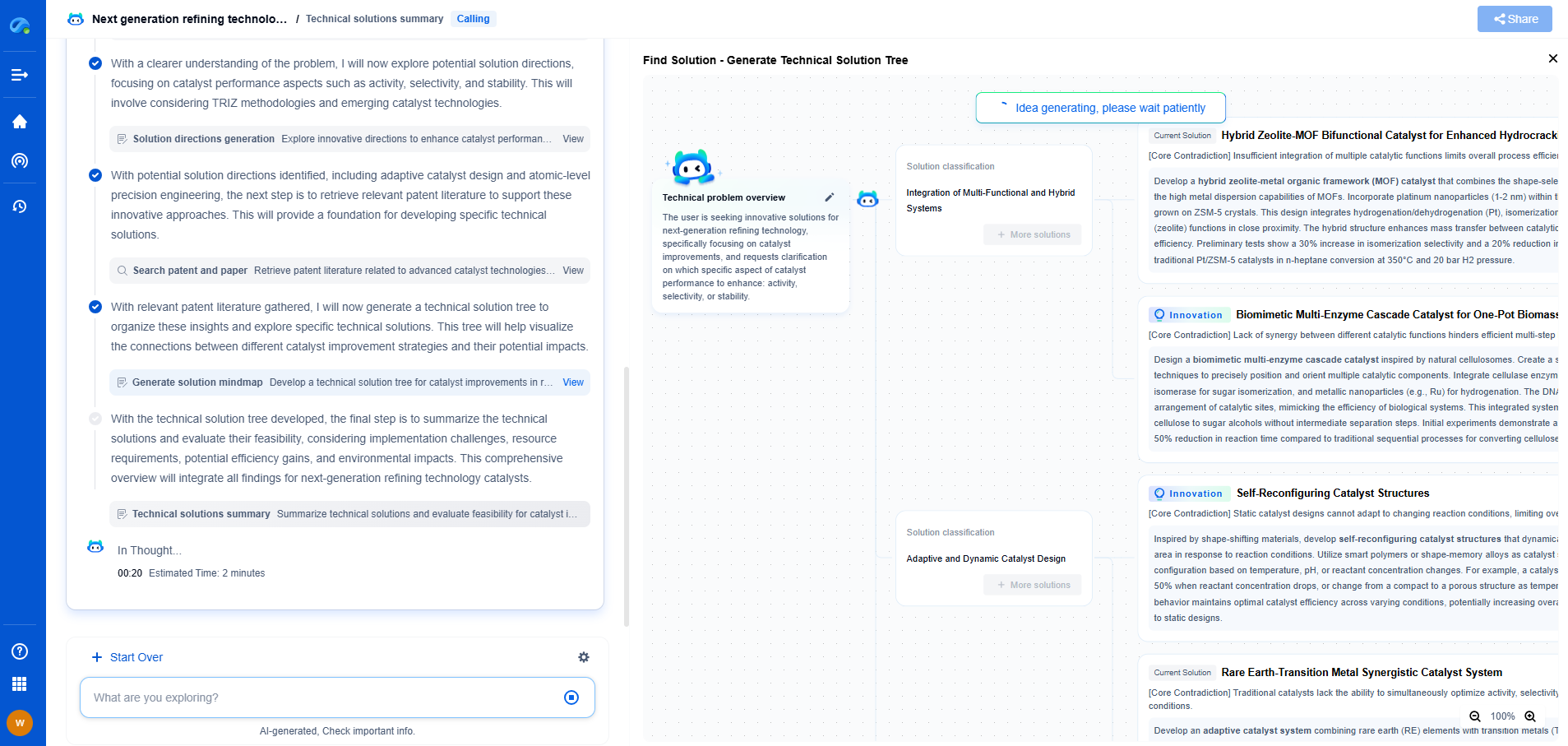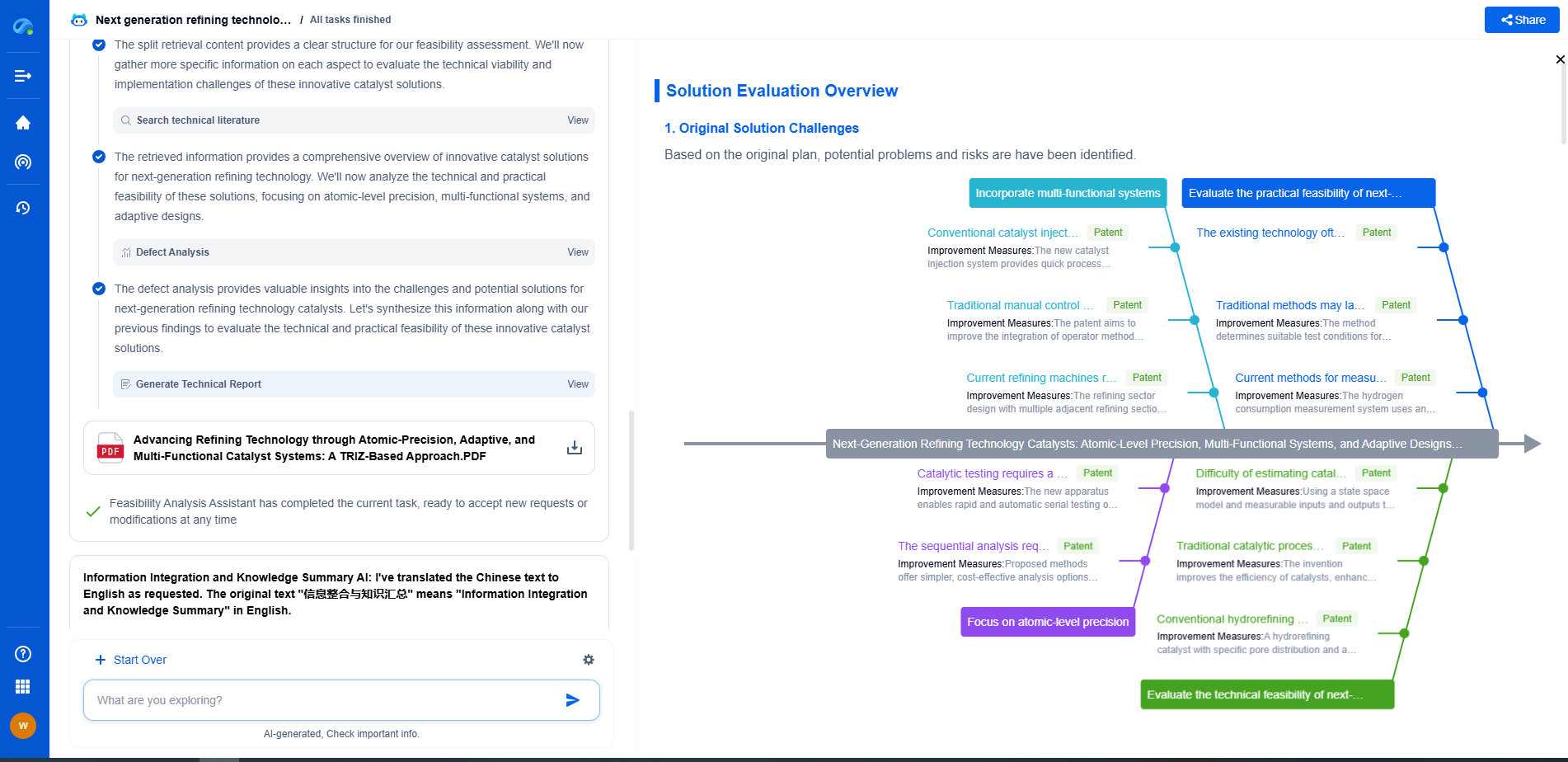Hebbian Learning Rules: Strengthening Connections Like the Human Brain
JUN 26, 2025 |
Hebbian learning is a fundamental theory in neuroscience and artificial intelligence, inspired by the way the human brain strengthens its synaptic connections. Named after Donald Hebb, a Canadian psychologist, this learning principle posits that the connections between neurons are reinforced when they are activated simultaneously. Hebbian learning is often summarized by the phrase, "Cells that fire together, wire together." This process is crucial for understanding how learning and memory formation occur in the brain, as well as for developing more sophisticated neural networks in machine learning.
Understanding Synaptic Plasticity
To appreciate Hebbian learning, it's essential to grasp the concept of synaptic plasticity. This refers to the brain's ability to modify the strength of connections between neurons, which is a key mechanism for learning and memory. Synaptic plasticity allows the brain to adapt to new information, experiences, and environments by creating stronger pathways for frequently used connections. Hebbian learning plays a critical role in this process by dictating which connections should be strengthened based on concurrent neuronal activity.
Hebb's Rule and its Implications
Hebb's rule can be mathematically expressed to reflect the increase in synaptic strength between two neurons when both are active simultaneously. This implies a causal relationship: if the firing of one neuron consistently leads to the firing of another, the connection between them becomes more potent. Essentially, this process underlies the brain’s ability to learn from repeated experiences, forming a basis for associative learning. In practical terms, this could mean associating the smell of coffee with waking up in the morning, as the repeated co-occurrence of these stimuli leads to a stronger neural association.
Applications in Artificial Intelligence
In the realm of artificial intelligence, Hebbian learning principles have been instrumental in the development of neural networks, particularly those designed to mimic human cognitive processes. These networks use Hebbian-like rules to adjust the weights of connections between artificial neurons, allowing them to learn from input data. This approach has led to advancements in pattern recognition, natural language processing, and other AI fields where adaptive learning is crucial. By emulating the brain’s ability to strengthen connections through experience, AI systems can improve their performance over time.
Challenges and Limitations
While Hebbian learning offers valuable insights into the mechanisms of learning and memory, it is not without its challenges and limitations. One significant issue is that, by itself, Hebbian learning does not account for the selective weakening of synaptic connections, a process that is equally important for efficient brain function. Without mechanisms to prune less useful connections, a network could become overloaded with information, leading to inefficiencies. In biological systems, this is addressed by complementary processes like Long-Term Depression (LTD), which reduces the strength of certain synaptic connections. AI researchers are exploring similar methods to enhance the adaptability and efficiency of artificial neural networks.
Future Directions
As our understanding of Hebbian learning and synaptic plasticity continues to evolve, so too does the potential for new applications in both neuroscience and artificial intelligence. Researchers are investigating how these principles can be leveraged to improve machine learning algorithms, making them more robust and capable of autonomous learning. Additionally, insights from Hebbian learning may offer pathways to developing more effective treatments for neurological disorders, as these conditions often involve disruptions in synaptic plasticity.
Conclusion
Hebbian learning rules provide a fascinating lens through which to view the complexities of learning and memory in both biological and artificial systems. By strengthening the connections that are most frequently activated together, this process enables dynamic adaptation to new information, forming the basis of cognitive development. Despite its challenges, Hebbian learning remains a cornerstone of both neuroscience and AI, promising further advancements as we deepen our understanding of these interconnected fields. As we continue to explore the intricacies of the brain and seek to replicate its capabilities in machines, Hebbian learning will undoubtedly play a pivotal role in shaping the future of intelligent systems.
Unleash the Full Potential of AI Innovation with Patsnap Eureka
The frontier of machine learning evolves faster than ever—from foundation models and neuromorphic computing to edge AI and self-supervised learning. Whether you're exploring novel architectures, optimizing inference at scale, or tracking patent landscapes in generative AI, staying ahead demands more than human bandwidth.
Patsnap Eureka, our intelligent AI assistant built for R&D professionals in high-tech sectors, empowers you with real-time expert-level analysis, technology roadmap exploration, and strategic mapping of core patents—all within a seamless, user-friendly interface.
👉 Try Patsnap Eureka today to accelerate your journey from ML ideas to IP assets—request a personalized demo or activate your trial now.
- R&D
- Intellectual Property
- Life Sciences
- Materials
- Tech Scout
- Unparalleled Data Quality
- Higher Quality Content
- 60% Fewer Hallucinations
Browse by: Latest US Patents, China's latest patents, Technical Efficacy Thesaurus, Application Domain, Technology Topic, Popular Technical Reports.
© 2025 PatSnap. All rights reserved.Legal|Privacy policy|Modern Slavery Act Transparency Statement|Sitemap|About US| Contact US: help@patsnap.com

